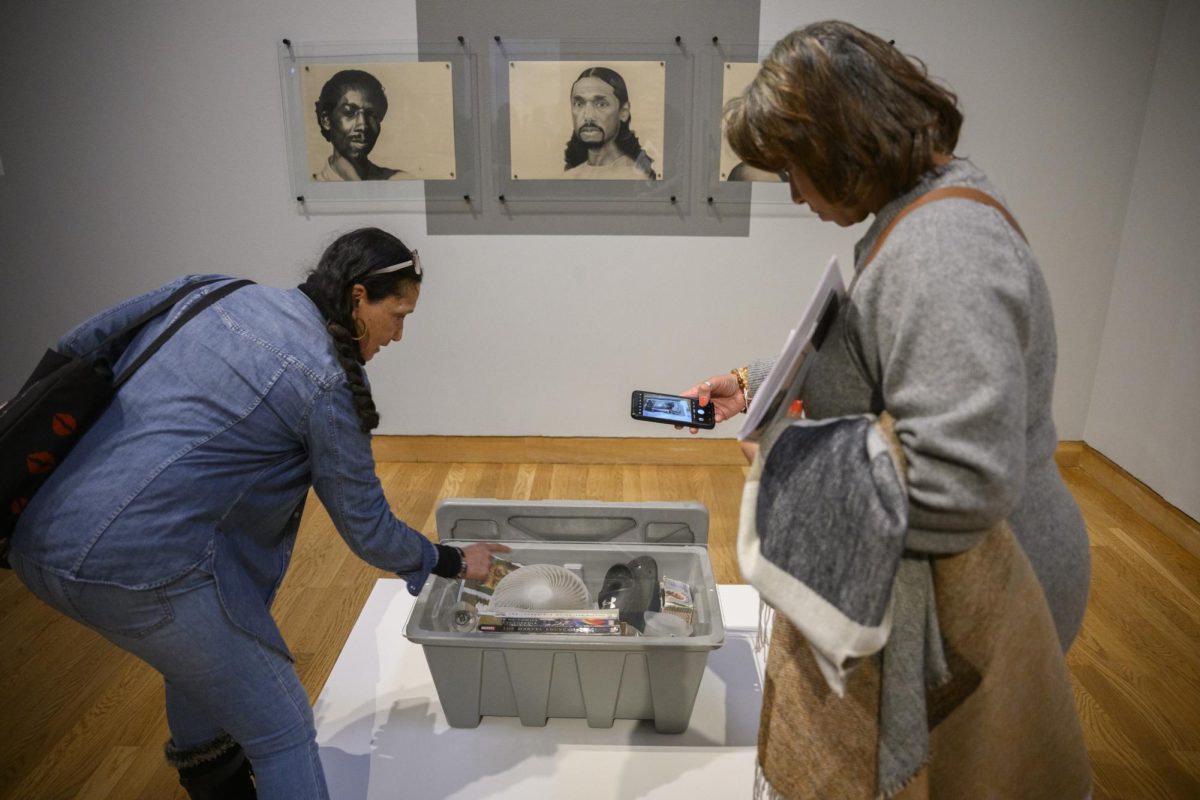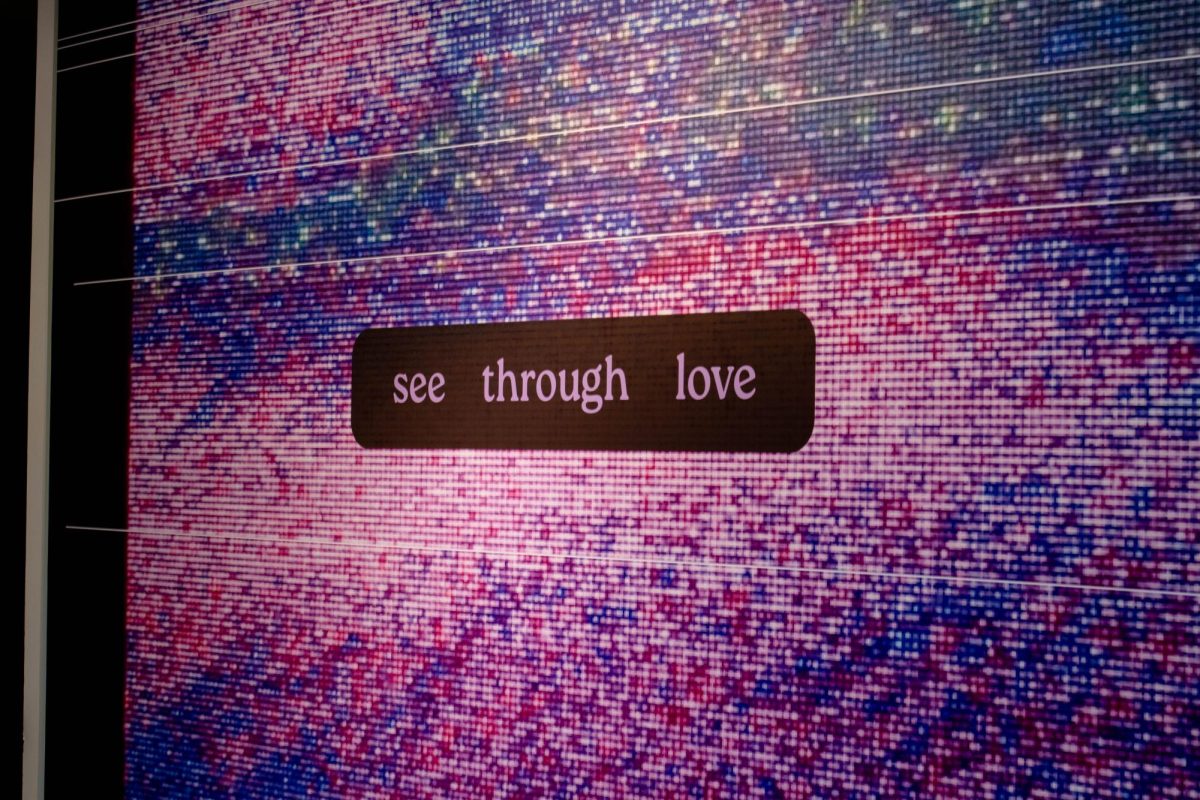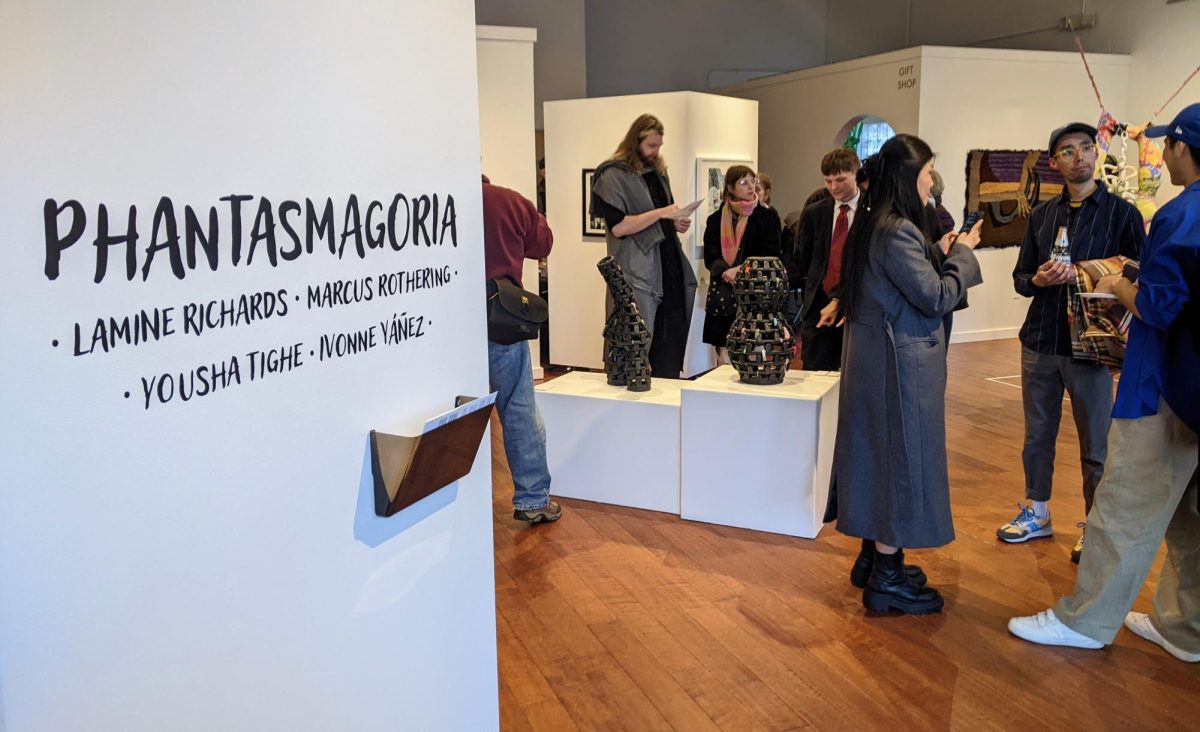The importance of citing sources is an early learned lesson for most college students.
For University of Minnesota associate professor Jenny Schmid, however, it’s more interesting to let the audience figure out where the ideas come from.
That’s one of the guiding principles behind “Free Radicals,” a new exhibit Schmid curated for the Nash Gallery at the Regis Center for Art.
She’s been teaching printmaking in the art school for 10 years, during which she’s encouraged her students to use printmaking to reference historical events.
“Printmakers are always using borrowed imagery and re-contextualizing it,” Schmid said.
She worked with this idea for “Free Radicals,” subtitled “Remixing History through the Power of Print.”
“You can be really relevant and socially engaged by using history,” Schmid said. “The goal was to point to a trend in printmaking right now, [a trend] that uses historical mashups and connects [them] to contemporary issues.”
Schmid and Nash Gallery director Howard Oransky chose to avoid any specific historical niche and instead included artists using historical images in different ways.
That’s why they chose to feature artist Tonja Torgerson’s image, “The Fall.”
In her feminist print, Torgerson uses the Adam and Eve figures in Albrecht Dürer’s “Adam and Eve” and surrounds them in flowers from one of Rachel Ruysch’s still-life paintings.
Another artist in “Free Radicals,” Glenn Ligon, takes images reminiscent of runaway slave posters and pairs them with his friends’ descriptions of him.
“As an artist and printmaker, I’m always looking throughout history for inspiration and insight into current times, [and] I think a lot of these artists are doing that,” Schmid said. “There’s an American trend to divorce ourselves from history. We always live in the now. I just don’t think that’s very wise.”
In addition to thinking about history, Schmid encourages fellow printmakers to avoid loftiness associated with other art forms.
“[Printmaking] has a tradition of being more political and blasphemous and closer to cartoons — a little less high-brow,” Schmid said. “[As artists], we have this artistic license where we don’t have to work in a linear way. We can use absurdity and these mashups to talk about politics critically.”
In one abstract piece by artist Sandow Birk, a giant monument with the Declaration of Human Rights crumbles in a city mashed together from buildings in Chicago, Seattle and Dubai, respectively.
The new exhibit also allows visitors to apply their own meaning to it.
“[One] thing I love about printmaking is that you can edit history,” Schmid said. “It’s like a code to decipher — you come in here and figure out what era people are quoting from.”
“Free Radicals: Remixing History through the Power of Print” reception
Where Regis Center for Art, 405 21st Ave S., Minneapolis
When 7 p.m. Thursday
Cost Free








